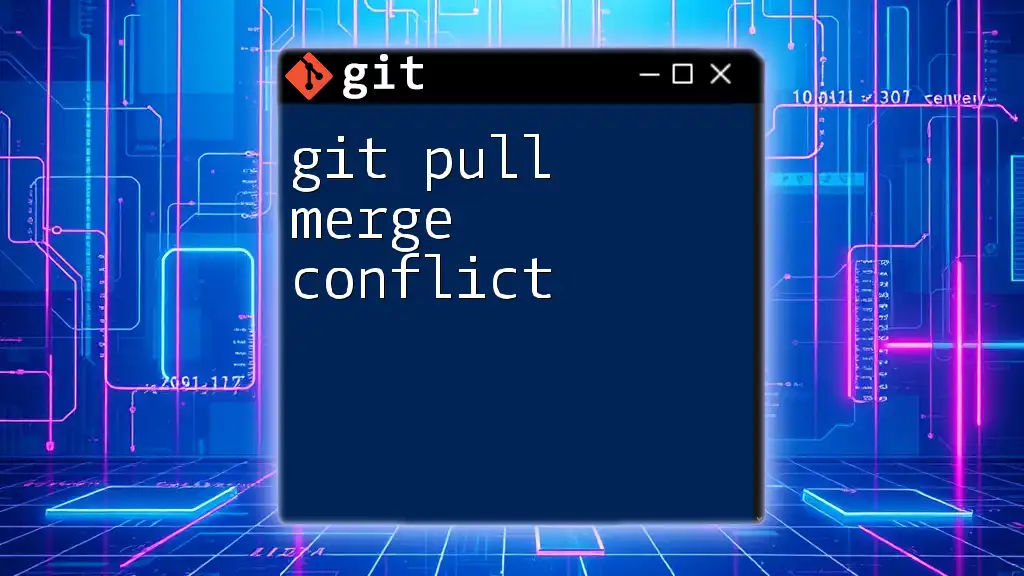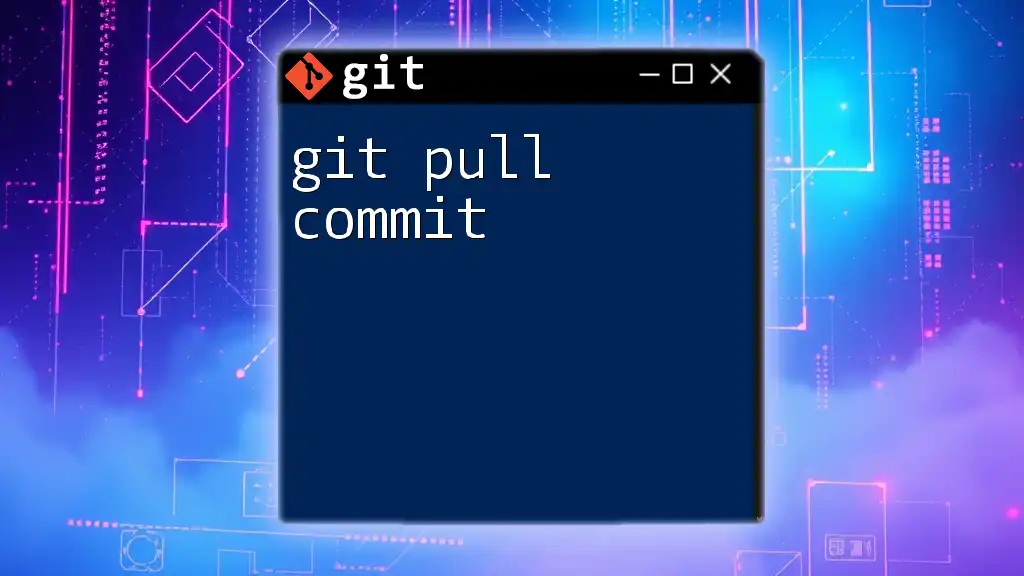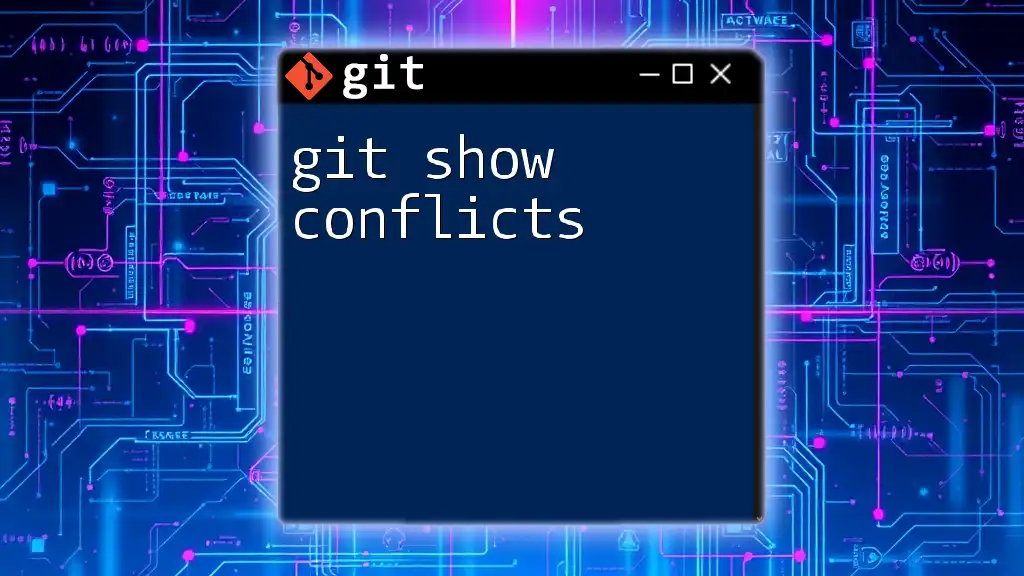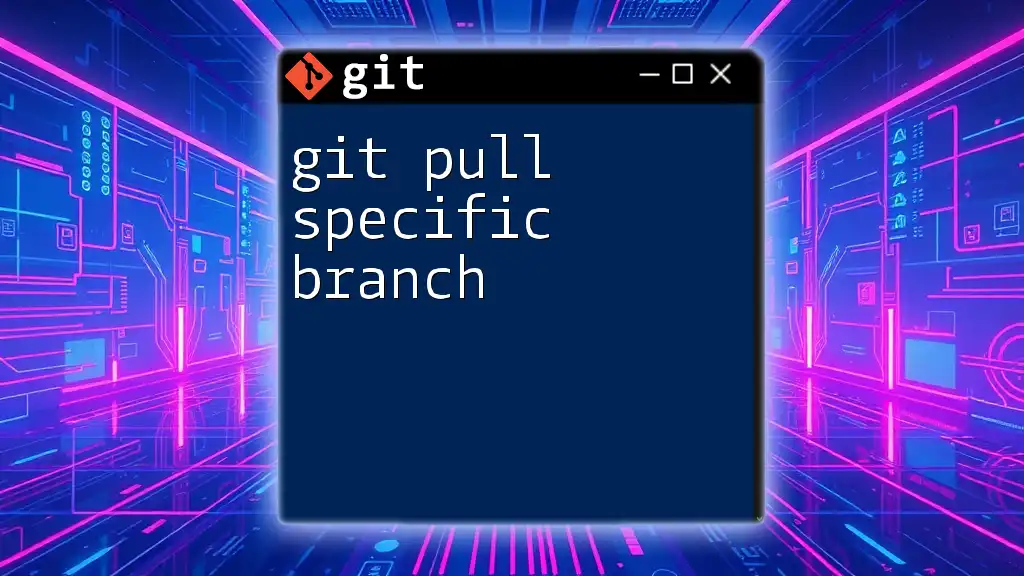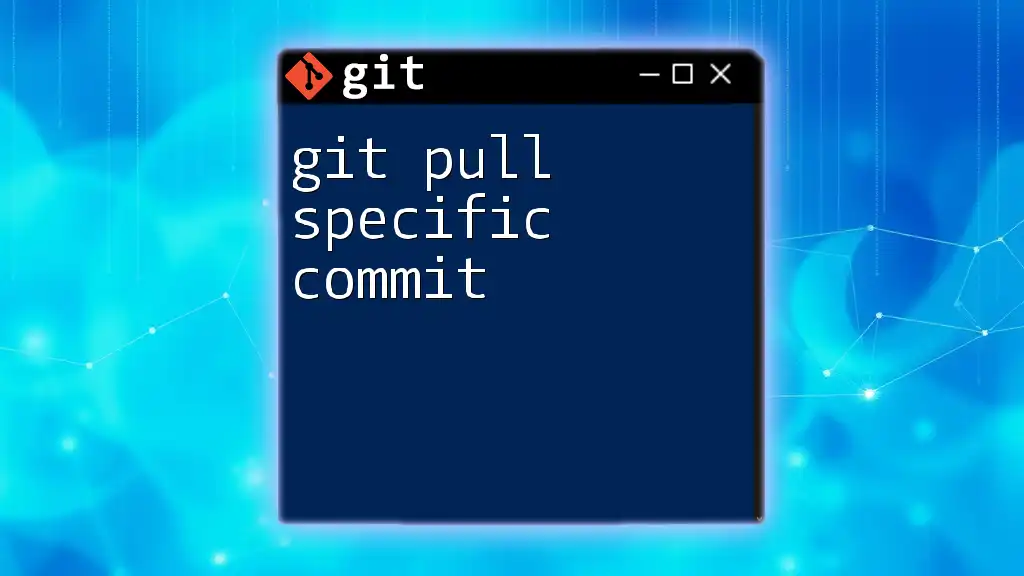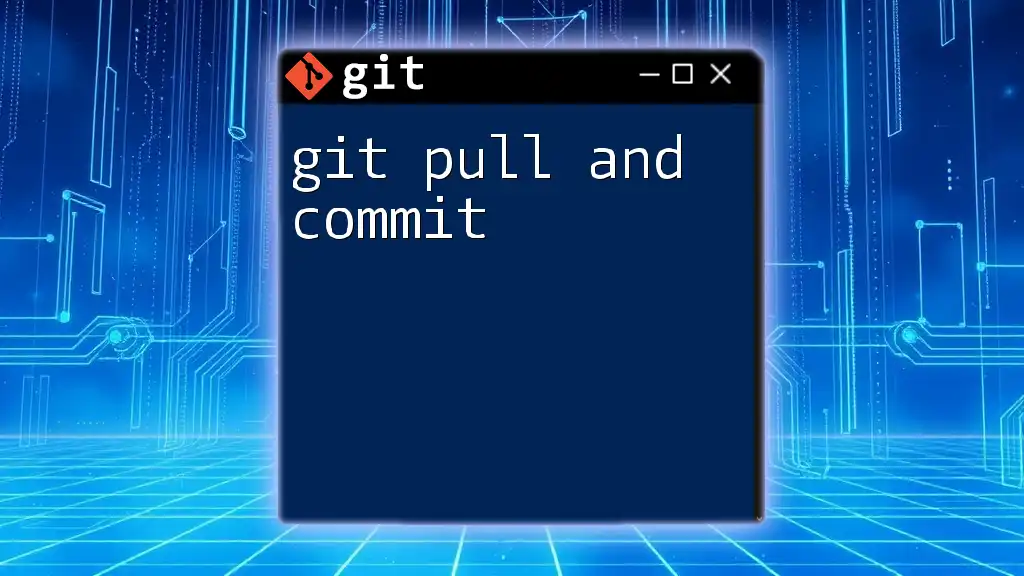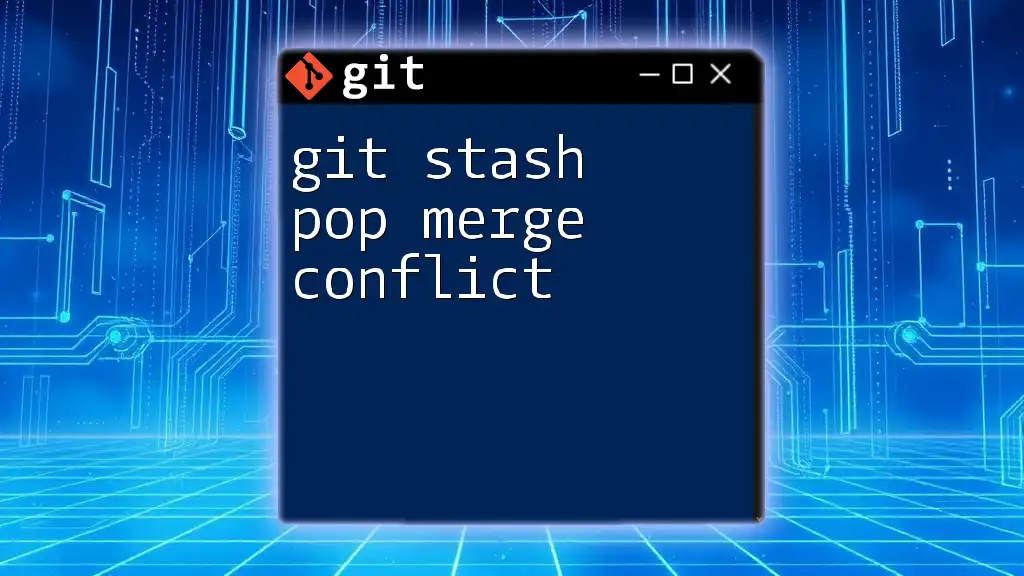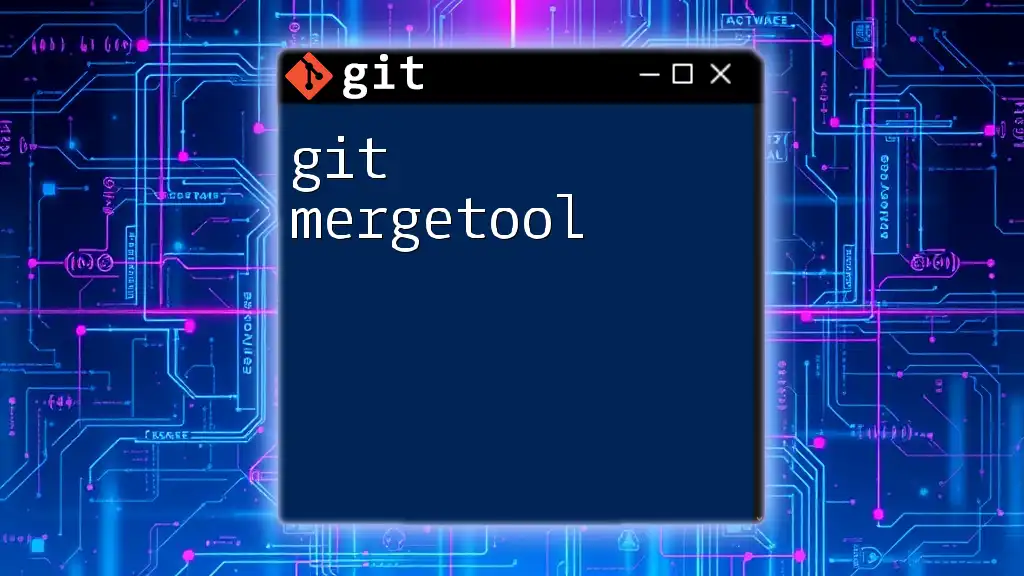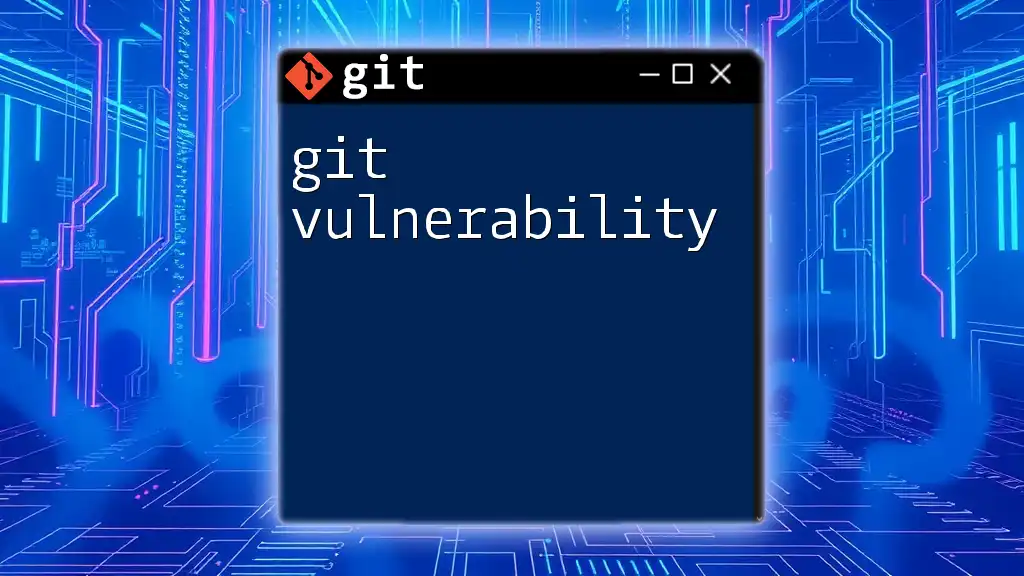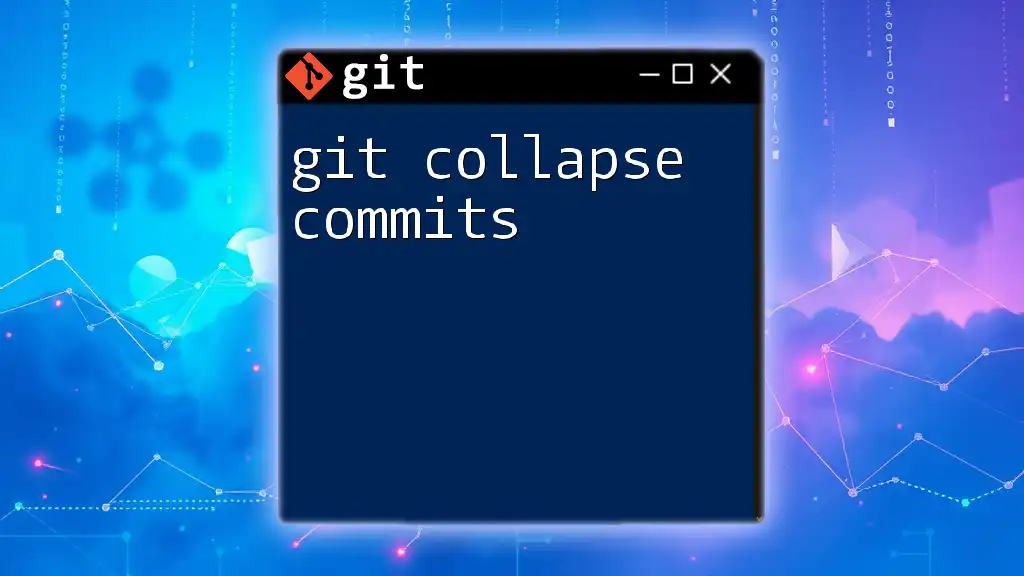A git pull merge conflict occurs when the changes in the remote branch cannot be automatically merged with the local branch due to differing modifications in the same part of the code.
Here's a code snippet to illustrate how to resolve a merge conflict:
git pull origin main
# If there's a conflict, Git will notify you to resolve it.
# After resolving conflicts in your preferred text editor, mark them as resolved:
git add <file_with_conflict>
# Then, complete the merge by committing:
git commit -m "Resolved merge conflict"
Understanding Merge Conflicts
What Causes Merge Conflicts?
Merge conflicts occur when multiple developers make changes to the same part of a file and then attempt to merge these changes together. They can arise from several situations:
- Simultaneous Changes: When two branches modify the same line in a file or when one branch deletes a file that the other branch has modified.
- Different Edits on the Same Line: If changes are made on the same line from two different branches, Git will not know which change to keep.
- File Innovations: When one branch introduces new content while another branch alters existing content of the same file.
The Importance of Merge Conflicts in Collaboration
Merge conflicts are not just obstacles to overcome; they serve as reminders of the importance of communication among team members. They encourage developers to coordinate their changes effectively and ensure everyone is aware of significant modifications being made to the codebase. This can lead to better teamwork and optimized project management.
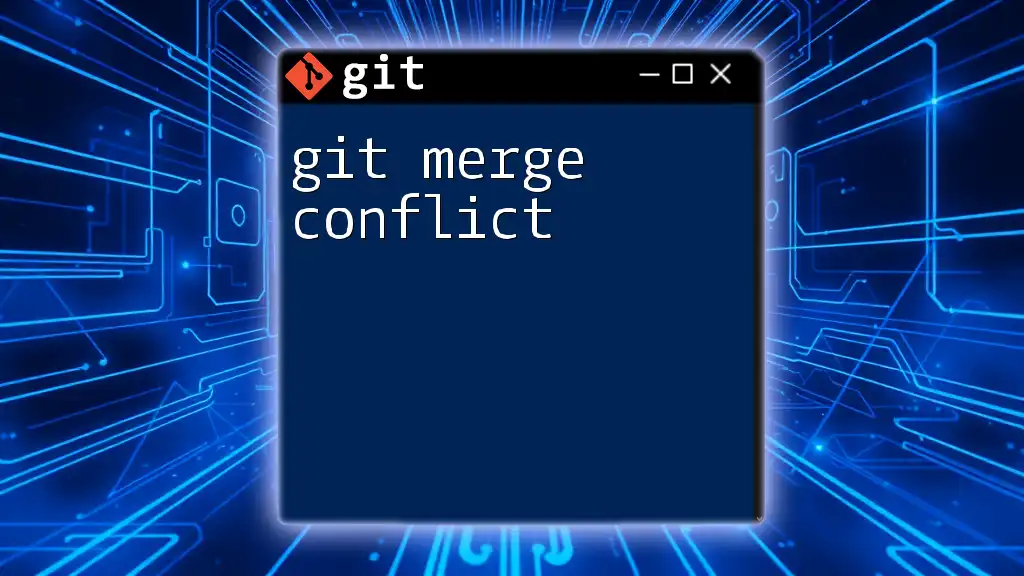
How to Identify a Merge Conflict
Steps Leading to a Merge Conflict
To better understand how merge conflicts arise, it's important to familiarize yourself with the steps that typically precede a conflict.
-
First, clone a repository:
git clone [repository URL] -
Next, create a new branch for your feature or fix:
git checkout -b [branch-name] -
Make your changes and commit them to your branch:
git add . git commit -m "Your message" -
Now, if another developer has updated the `main` branch while you were working, and you attempt to pull changes from that branch:
git pull origin [branch-name]This action triggers the merge process, and if conflicting changes exist, Git will report a merge conflict.
Error Messages Indicating Merge Conflicts
When a merge conflict occurs during a `git pull`, Git provides clear error messages to inform you that conflicts need to be resolved. You might see messages such as:
Automatic merge failed; fix conflicts and then commit the result.
Understanding these messages is critical. They point out that while Git attempted to merge the changes automatically, it encountered conflicts that require your intervention.
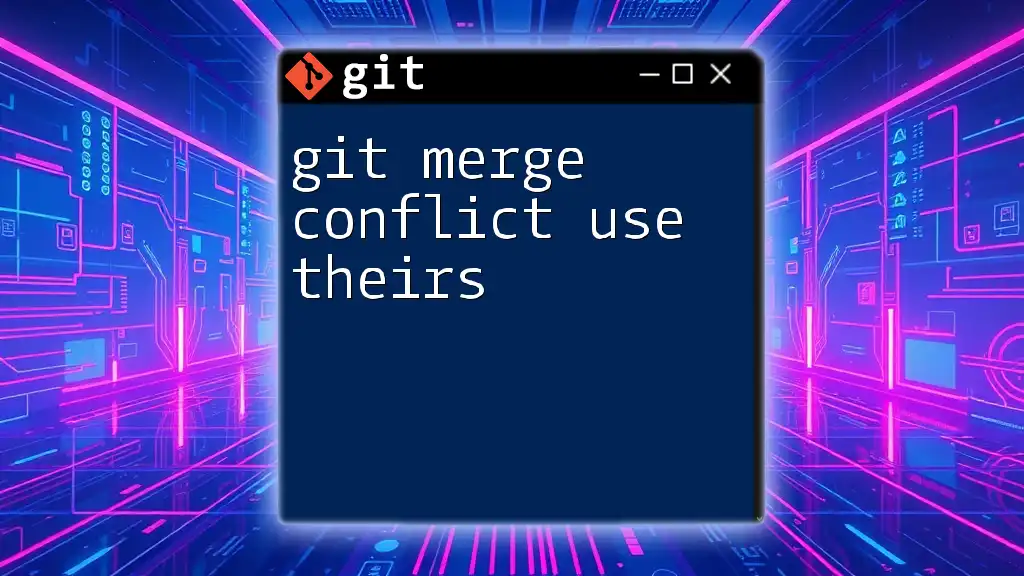
Resolving Merge Conflicts
Initial Steps to Take
Once you've encountered a merge conflict, begin by checking the status of your repository:
git status
This command will display all files that have conflicts, marked as "Unmerged paths." Identifying these files is essential for an effective resolution process.
Viewing the Conflicts
To inspect the changes, Git provides the `git diff` command. This command allows you to see exactly what changes have been made:
git diff [file-name]
This command reveals the differences between versions, making it easier for you to discern how each change impacts the file.
How to Resolve Conflicts Manually
Start by navigating to the impacted file(s). Once inside, you will encounter conflict markers indicating changes in different branches.
An example of this might look like:
<<<<<<< HEAD
Your changes
=======
Incoming changes
>>>>>>> branch-name
In this example:
- HEAD represents your current branch’s changes.
- The section marked Incoming changes reflects modifications on the branch you attempted to merge.
To resolve the conflict, you need to manually edit the file and decide which changes to keep or how to integrate the changes together effectively. After making these modifications, remove the conflict markers before saving.
Using GUI Tools for Conflict Resolution
For those who prefer a visual approach, several Git GUI tools can assist in resolving merge conflicts. Applications such as GitKraken and SourceTree allow you to visualize the differences between conflicting changes.
These tools often provide features to:
- Compare branches visually.
- Resolve conflicts interactively, sometimes with drag-and-drop functionality.
- Improve overall management of branch merges.
Using such GUI tools can simplify the resolution process, especially for those who may find the command line less intuitive.
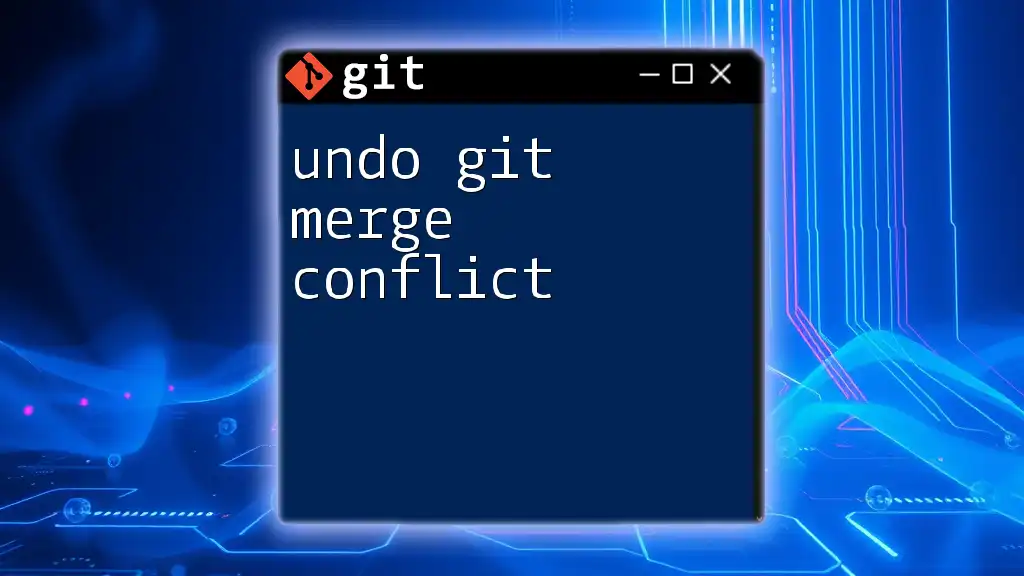
Finalizing the Merge
Staging Resolved Files
After resolving the conflicts, you must stage the modified files to indicate that the conflict has been handled. Use the following command:
git add [file-name]
This command prepares the resolved files for the next commit, signaling to Git that you have fixed the conflicts.
Committing the Merge
Once you've staged the resolved files, finalize the process by committing the changes:
git commit -m "Resolved merge conflict in [file-name]"
This commit captures the merge resolution, allowing the project to move forward without unresolved conflicts.
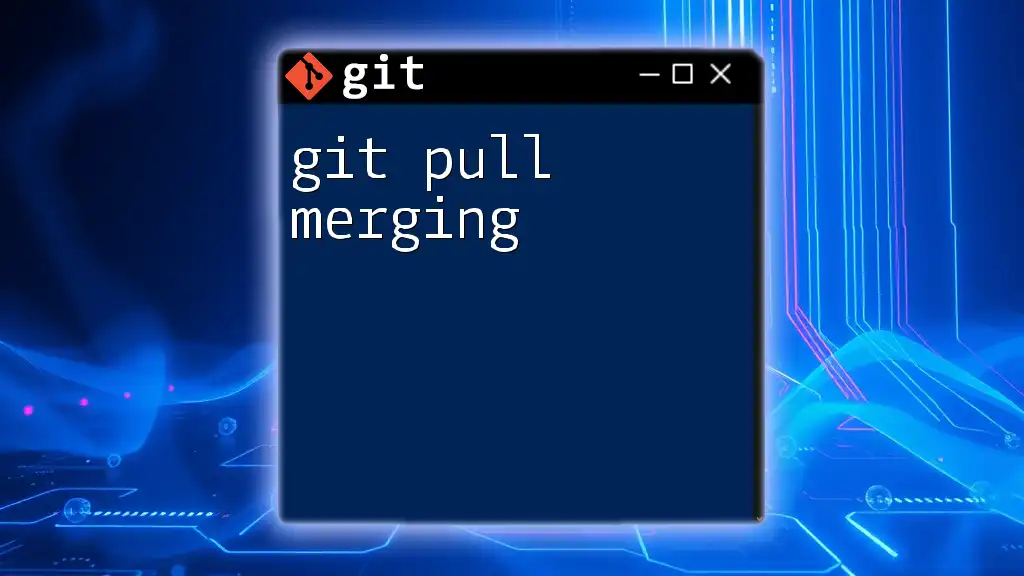
Best Practices to Avoid Merge Conflicts
Regular Communication
Encouraging regular communication among team members minimizes misunderstandings and overlapping changes. When significant alterations are made, it's best to notify others promptly to ensure everyone is on the same page.
Frequent Pulls
Establishing a practice of pulling changes regularly is another way to mitigate merge conflicts. By regularly executing:
git pull origin [branch-name]
You stay updated with the latest changes on the repository, reducing the likelihood of significant conflicts when it comes time to merge.
Branching Strategy
Implementing a clear branching strategy, like Git Flow, can dramatically reduce the chances of merge conflicts. This strategy involves using distinct branches for different features, fixes, or releases, making it easier to manage changes without interference.
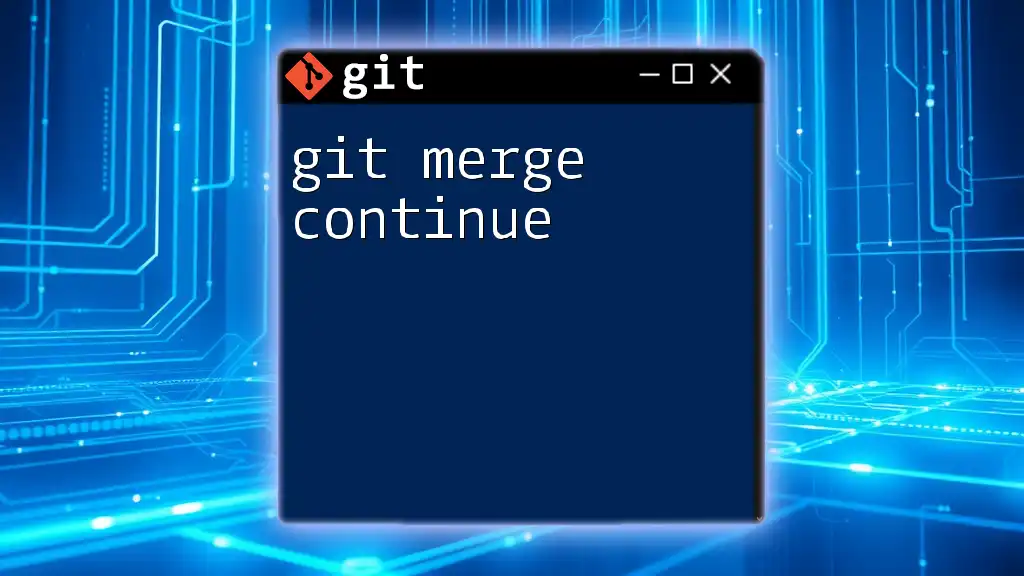
Conclusion
Merge conflicts are an inherent part of collaborative development, emphasizing the value of communication and clarity among team members. By understanding how to resolve these conflicts effectively and adopting best practices to prevent them, developers can streamline their workflow and enhance their teamwork.
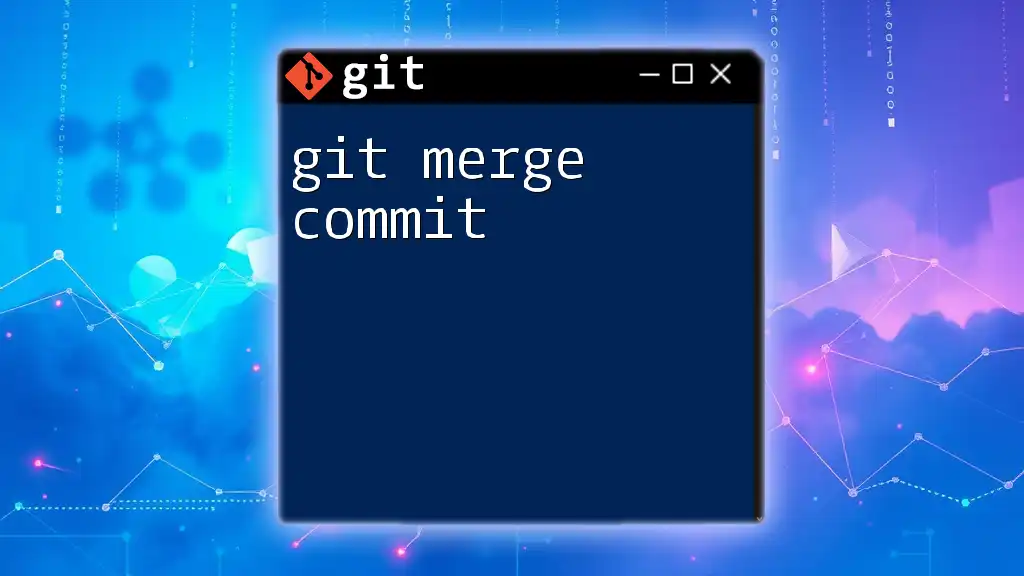
Further Resources
Books, Tutorials, and Online Courses
To deepen your knowledge of Git, consider exploring recommended resources. Familiarizing yourself with advanced topics and various functionalities will solidify your command over version control. Be sure to check out our company for specialized training designed to boost your Git proficiency significantly.

